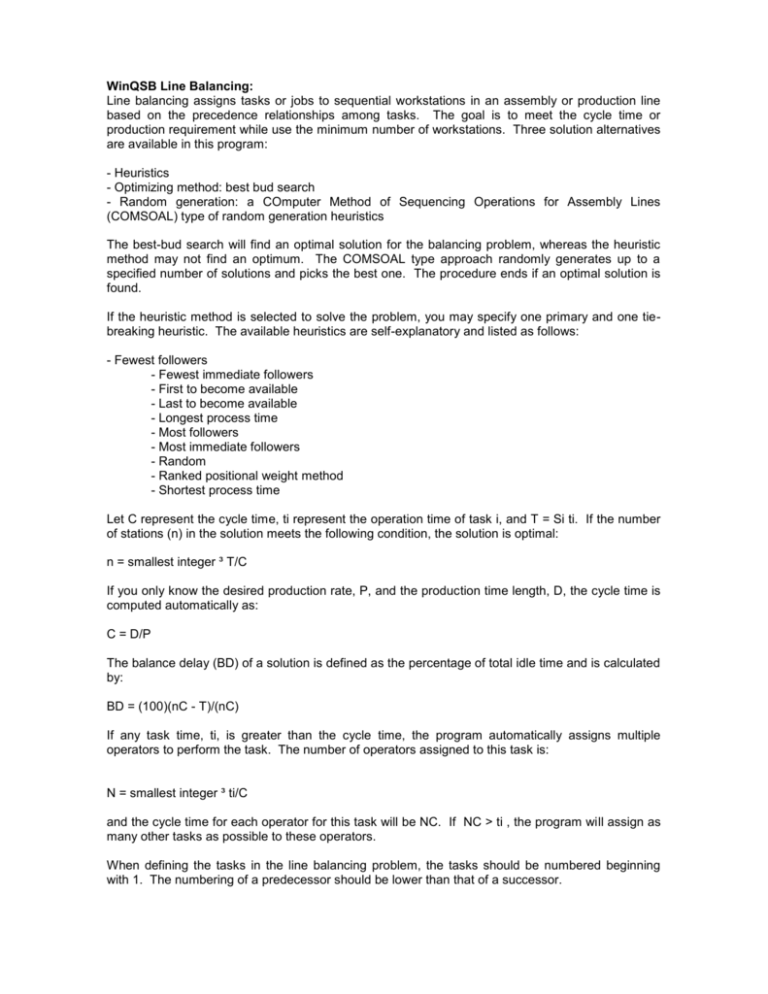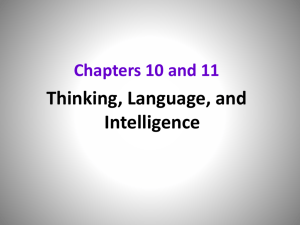Line Balancing
advertisement

WinQSB Line Balancing: Line balancing assigns tasks or jobs to sequential workstations in an assembly or production line based on the precedence relationships among tasks. The goal is to meet the cycle time or production requirement while use the minimum number of workstations. Three solution alternatives are available in this program: - Heuristics - Optimizing method: best bud search - Random generation: a COmputer Method of Sequencing Operations for Assembly Lines (COMSOAL) type of random generation heuristics The best-bud search will find an optimal solution for the balancing problem, whereas the heuristic method may not find an optimum. The COMSOAL type approach randomly generates up to a specified number of solutions and picks the best one. The procedure ends if an optimal solution is found. If the heuristic method is selected to solve the problem, you may specify one primary and one tiebreaking heuristic. The available heuristics are self-explanatory and listed as follows: - Fewest followers - Fewest immediate followers - First to become available - Last to become available - Longest process time - Most followers - Most immediate followers - Random - Ranked positional weight method - Shortest process time Let C represent the cycle time, ti represent the operation time of task i, and T = Si ti. If the number of stations (n) in the solution meets the following condition, the solution is optimal: n = smallest integer ³ T/C If you only know the desired production rate, P, and the production time length, D, the cycle time is computed automatically as: C = D/P The balance delay (BD) of a solution is defined as the percentage of total idle time and is calculated by: BD = (100)(nC - T)/(nC) If any task time, ti, is greater than the cycle time, the program automatically assigns multiple operators to perform the task. The number of operators assigned to this task is: N = smallest integer ³ ti/C and the cycle time for each operator for this task will be NC. If NC > ti , the program will assign as many other tasks as possible to these operators. When defining the tasks in the line balancing problem, the tasks should be numbered beginning with 1. The numbering of a predecessor should be lower than that of a successor.











